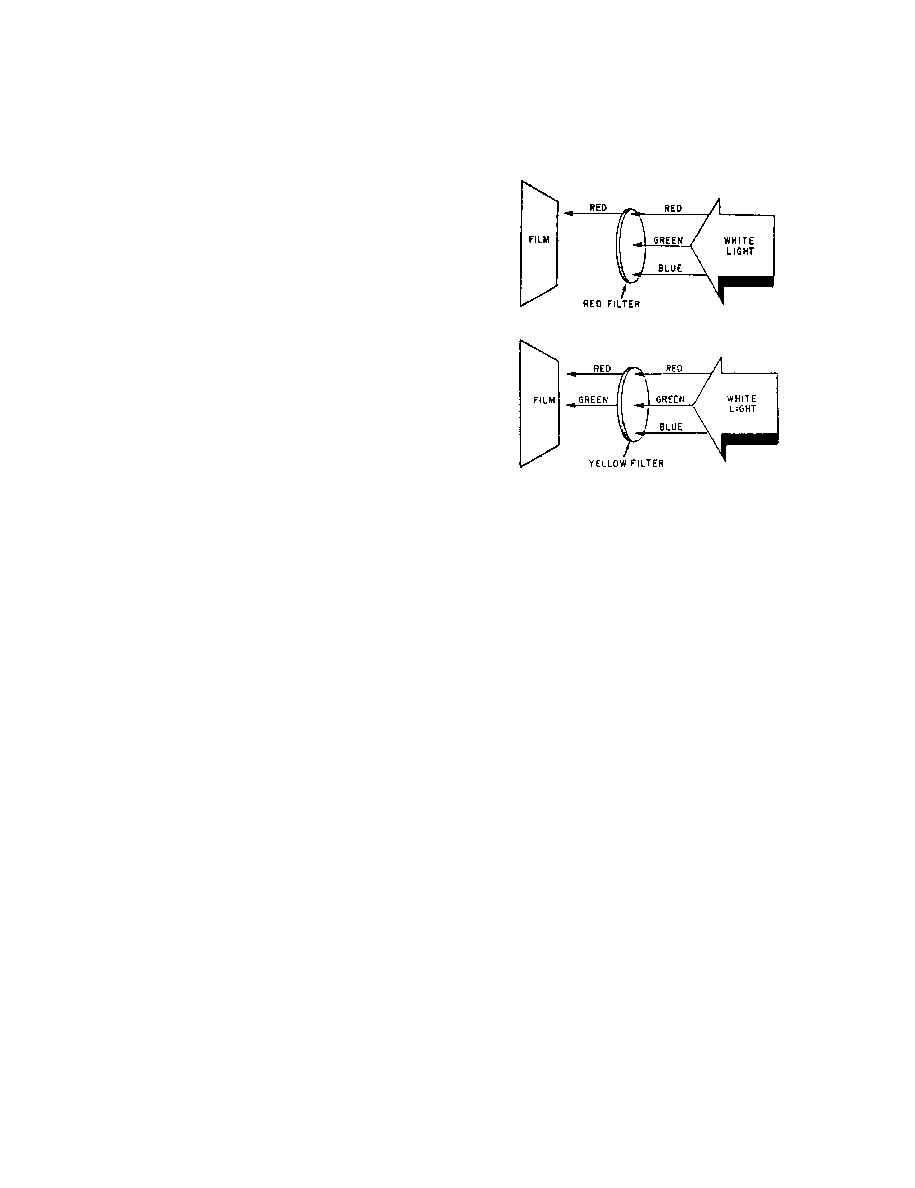
DOFMaster
for Windows
On-line
Depth of Field
Calculator
DOFMaster for Mobile Devices
On-line
Depth of Field
Table
Hyperfocal
Distance Chart
Articles
FAQ
Recommended
Books
Support
Contact
Links
Home
for Windows
On-line
Depth of Field
Calculator
DOFMaster for Mobile Devices
On-line
Depth of Field
Table
Hyperfocal
Distance Chart
Articles
FAQ
Recommended
Books
Support
Contact
Links
Home
As an Amazon Associate I earn from qualifying purchases.
![]()
enhance the final product in both black-and-white and
color photography.
emulsion As light is transmitted through a filter, at least
one of the following alterations occurs:
emulsion and to control the exposure of an emulsion.
Interlocked with the use of filters are characteristics of
light and characteristics of photographic emulsions. The
effectiveness of a filter depends upon the ability of an
emulsion to respond to the color of light transmitted by
the filter.
panchromatic film records colors as gray tones. These
gray tones correspond roughly to the tonal range as seen
by the human eye. Colored filters selectively brighten
or darken these tones. In color photography, colored
filters are used to correct or distort color balance.
all other colors. For example, a red filter transmits red
light and may partially or completely absorb blue and
green light, depending on the deepness or purity of its
color (fig. 3-1). Likewise, a yellow filter transmits red
and green light and partially or completely absorbs blue
light. Remember, a secondary color of light is produced
by combining two primary colors of light. Red and green
equal yellow; thus a yellow filter passes red and green
light.
squares, and glass squares. Glass disk filters are the most
practical for general use. They are available in different
sizes called series numbers, such as Series 4,5, and 6 or
in millimeter sizes, such as 52mm and 59mm. Glass disk
filters attach to a camera lens in two ways. Some have
threads and screw directly into the lens barrel, and the
others are held on the lens barrel by an adapter ring.
inserted into special filter holders that are part of the
camera, or they are held on the camera by a square filter
Wratten filters. It uses designators, such as No. 6, No.
8, and No. 11. Some filters have a descriptive name
rather than a number; for example, polarizing, skylight,
and neutral density. Color compensating and color print
filters have yet another designation system.
Basic Photography Course

As an Amazon Associate I earn from qualifying purchases.
WWW.DOFMASTER.COM
© 2006 Don Fleming. All rights reserved.
© 2006 Don Fleming. All rights reserved.